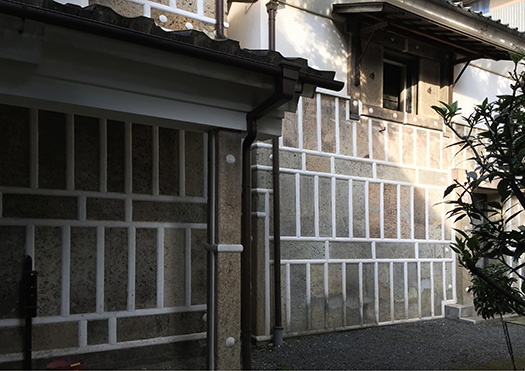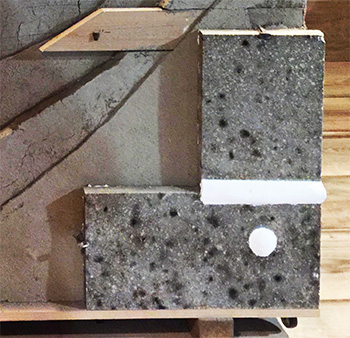


日本人のいい家シリーズ今回は、過去にも取り上げた宇都宮駅前商家であります。
やはり圧倒的な撮影の写真量で再整理していても迫力がある。
ということで、再度紹介させていただきます。
ちなみに前回の掲載は2016年11月3日でした。
近接して栃木県市貝での奈良平安期の豪族館探訪があったので、
そのときに探訪したものだと思います。記憶が甦ってくる。
また今回も「大谷石」による外装仕上げの様子から。
この建物は1851年に石倉が建立されて、今現在残る主屋・新蔵は
明治28年、1895年建築とされています。
最初期建築からは170年、主屋などは126年の建物です。
主屋建築満100年で宇都宮市から指定文化財に指定され、翌年市に寄贈された。
篠原家は下野国河内郡宿郷村(現・宇都宮市宿郷)の篠原本家4代目の3男が、
宇都宮城下の博労町(現在地)に江戸時代末期に興した醤油醸造業を営む商家。
宗家である篠原家の方はWEB上では消息不明。
3男が「継いだ」ということではなく分家なのでしょう。
このあたりの消息は探究できていません。しかし、幕末期で100haを越える
大地主として財力を誇っていたという消息があり、
江戸期の「貧富の差」というものがまざまざと感じられる。
<ちなみに100haとは1km×1kmの土地面積>
庶民階級では「持てるもの」は富み栄え貧困層は百姓一揆に打って出た。
大名家も武家も支配層の武士はひたすら農本主義で経済認識に欠け、
北海道でも高田屋嘉兵衛のような存在が事実上の対ロシア外交まで行った。
高田屋に代表される北前交易の実質を調べたら、船の中で積み荷の袋を詰め替え
計算尺度を勝手に変更するような行為まで行われていた。・・・
経済合理性の認識が弱く、各藩、湊ごとに度量衡変動があって
流通事業者はそういったポイントを突いて巨利を得たのでしょう。
そういう全国的経済支配権力機構自体がなかったのだろう。
税の考え方でひたすらコメ換算する経済感覚が時代に取り残されていた。
だから「武士は食わねど高楊枝」みたいな無能者になり
実体経済は地主・大規模農業経営者たちが「庄屋・肝煎」層を形成し
同時に経済全般を掌握しかれらの差配で経済社会が回っていたのだと思う。
山形酒田の豪商「本間様には及びもせぬが、せめてなりたや殿様に」という
戯れ言がまったく実質をあらわしていたと言える。
ただ、そういう地主層たちも経済社会での浮沈は避けられなかったでしょう。
おっと、かなり横道書きすぎ(笑)。
テーマは大谷石外装であります。
大谷石はいま宇都宮市内になっている地域から産出されている。
1922年、フランク・ロイド・ライト設計の帝国ホテルに使用されて
一躍近代建築材として脚光を浴びたけれど、こういう活用例があった。
この外装によってこの建物は大戦末期の「空襲」からの消失を免れた。
空襲後この建物で軍による配給がおこなわれ、おにぎりが支給されたとか。
重厚な建築外装・大谷石の威力を語ってくれている。
写真はその組成をあらわしたもので石の板の厚みは8cm。
下地の塗り壁+桟木を貫通して釘金物が打たれて石板を保持している。
その保持ヵ所を白漆喰で盛り上げるように被覆している。
こういった作りようで戦火にも耐えてきていたのですね。
・・・米軍による大空襲とそれから建築を守った建材もアメリカ人再発見由来。
明治以降の紆余曲折の日米関係もそこに深く刻印されているか。
English version⬇
[Utsunomiya Gosho “Shinohara Family” Stone Fire Wall / Japanese Good House ㉝-1]
Good Japanese House Series This time, we are a merchant house in front of Utsunomiya station, which we have covered in the past.
After all it is powerful even if it is rearranged with an overwhelming amount of photographs.
So, I would like to introduce it again.
By the way, the last posting was on November 3, 2016.
There was a visit to the Gozokukan during the Nara Heian period in Ichikai, Tochigi prefecture, so
I think it was something I explored at that time. The memory comes back.
Also this time, from the appearance of the exterior finish by “Oya stone”.
Ishikura was erected in this building in 1851, and the main building, Shinzo, which remains today
It is said to have been built in 1895 in 1895.
It is 170 years old from the earliest construction, and the main building is 126 years old.
It was designated as a designated cultural property by Utsunomiya City in 100 years since the main building was built, and was donated to the city the following year.
history. The Shinohara family is the third son of the 4th generation of the Shinohara head family in Shukugo Village, Kawachi District, Shimotsuke Province (currently Shukugo, Utsunomiya City).
A merchant who runs a soy sauce brewing business that started in the late Edo period in Bakuromachi (current location) under Utsunomiya Castle.
The Shinohara family, who is a Soke, is unknown on the WEB.
It’s not that the three men “successed”, but that it’s a branch house.
I haven’t been able to find out what happened around here. However, it exceeds 100ha at the end of the Edo period.
There is a news that he was proud of his financial strength as a landlord,
The “difference between rich and poor” in the Edo period can be felt in various ways.
In the common class, “what you have” was rich and prosperous, and the poor were struck by a peasant.
The samurai of the ruling class, both the daimyo and the samurai, are agrarian and lack economic awareness.
Even in Hokkaido, an existence like Takadaya Kahei went to de facto diplomacy with Russia.
After investigating the substance of Kitamae trade represented by Takadaya, refill the cargo bag on the ship.
Even the act of changing the calculation scale without permission was performed.・ ・ ・
The recognition of economic rationality is weak, and there are weights and measures fluctuations for each clan and Minato.
The distributor would have made a huge profit by taking advantage of such points.
Perhaps there was no such national economic power organization itself.
The economic sense of converting rice to rice based on the idea of tax was left behind in the times.
So I became an incompetent person like “Samurai don’t eat but Takayoe”
In the real economy, landowners and large-scale agricultural managers form the “Shoya / Liver” layer.
At the same time, I think that the economy and society were turning around due to their difference in controlling the economy as a whole.
Yamagata Sakata’s wealthy merchant, “I can’t beat Honma, but at least to Narita-sama.”
It can be said that the playful words were completely real.
However, the ups and downs of such landowners would have been inevitable in the economic society.
Oops, I wrote too much sideways (laughs).
The theme is Oya stone exterior.
Oya stone is produced from the area that is now in Utsunomiya city.
Used in the Imperial Hotel designed by Frank Lloyd Wright in 1922
Although it was in the limelight as a modern building material, there was an example of such use.
This exterior saved the building from its “air raids” at the end of World War II.
After the air raid, the building was distributed by the military and rice balls were provided.
He talks about the power of Oya stone, a profound architectural exterior.
The photo shows the composition, and the thickness of the stone board is 8 cm.
Hardware is struck through the underlying plaster wall + pier, holding the lithograph.
The holding place is covered with white plaster so as to heap up.
You’ve endured the war with this kind of construction.
… The building materials that protected the building from the large air raid by the US military are also derived from the rediscovery of Americans.
Is the twists and turns of Japan-US relations after the Meiji era deeply engraved there?
Posted on 6月 2nd, 2021 by 三木 奎吾
Filed under: 住宅マーケティング, 日本社会・文化研究







コメントを投稿
「※誹謗中傷や、悪意のある書き込み、営利目的などのコメントを防ぐために、投稿された全てのコメントは一時的に保留されますのでご了承ください。」
You must be logged in to post a comment.